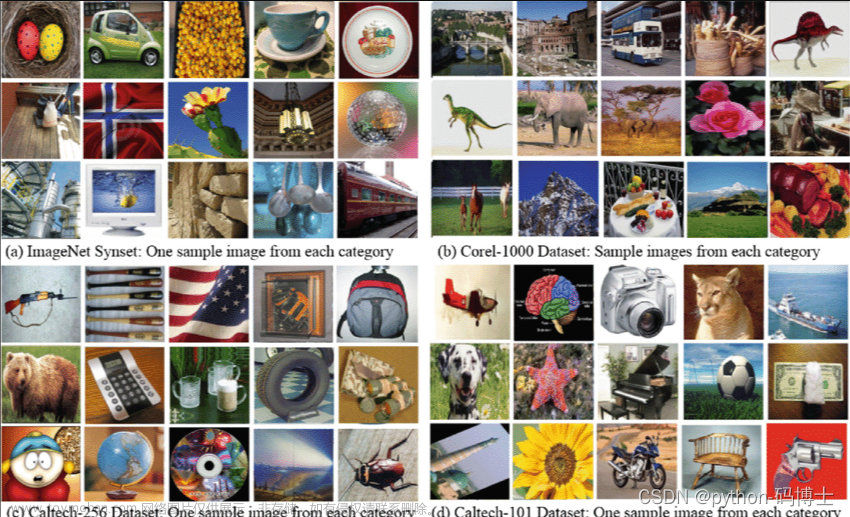前言
本文主要阐述如何使用mmdetection训练自己的数据,包括配置文件的修改,训练时的数据增强,加载预训练权重以及绘制损失函数图等。这里承接上一篇文章,默认已经准备好了COCO格式数据集且已安装mmdetection,环境也已经配置完成。
这里说明一下,因为mmdetection更新至2.x版本之后有些用法不一样了,所以对本文重新更新一下,这里使用的mmdetection的版本是2.27.0,只要是2.x版本本文都适用的。
1、配置文件修改
配置文件获取方式一:
首先就是根据任务选定一个训练模型,这里我选用yolox-s作为我的训练模型,进入mmdetection/configs/yolox文件夹,可以看到有以下文件:
这里可以看到有yolox-s的配置文件yolox_s_8x8_300e_coco.py,这里请注意:不要在默认的配置文件中修改内容,最好将要修改的配置文件复制一份,在副本文件中修改内容!!! 复制一份配置文件之后,就可以根据需要进行修改了!
配置文件获取方式二(推荐):
方式二就是使用openmmlab的包管理工具mim来获取配置文件和预训练权重,这里的mim在安装mmdetection时就安装上了,就不进行安装说明了,如果有问题请参考mmdetection文档。
这里以jupyternotebook为例进行讲述,在终端使用时请去掉感叹号!
# 以yolox为例获取配置文件 --model后面就写你想获取的模型配置文件
!mim search mmdet --model 'yolox'
当上述运行后,会出现下面的内容:
这里我要使用yolox-s,那么我就选中对应的config id:yolox_s_8x8_300e_coco,然后执行下面的代码:
# --dest后面有个空格,然后再加一个点,这个得是英文的点
!mim download mmdet --config yolox_s_8x8_300e_coco --dest .
这样就将配置文件和预训练权重下载到你的当前文件执行的目录下了:
之后在这个配置文件里面改你所需的东西就行了
1.1 model部分

这里大部分参数可以沿用默认的,或许有修改的是bbox_head中的num_classes=80,这个是类别数,COCO数据集是80类,你可以看自己数据集是多少类别,然后改成对应的,比如我的数据集有2类,那么就改成num_classes=2。
另外就是test_cfg下的nms=dict(type='nms', iou_threshold=0.65),iou_threshold=0.65可以修改,你可以把iou阈值改成你想要的,比如iou_threshold=0.40。
如果想使用预训练权重,那么可以这样设置,就是在model字典开头,加上init_cfg=dict(type='Pretrained', checkpoint='这里输入你的预训练权重文件路径')

一些分类头和FPN的修改和BackBone的替换并不在本文之内。
1.2 dataset部分
2.x之后的mmdetection在dataset部分有一些不同,这里重新说明一下自定义数据集的设置
在mmdetection文件夹中创建data文件夹,然后创建子文件夹,把子文件夹的名称设为coco,将你的训练、验证、测试数据导入其中。具体样式如下:

返回配置文件,然后在下列填入你的数据集路径:
你数据集的类别可能不是coco的80类,那么就需要把类别给改了,具体操作如下:
- 进入
mmdetection/mmdet/datasets,打开coco.py,我们要修改其内容(这里我们默认数据集格式是COCO)
- 按照下图样式,把原来的CLASSES注掉,新起一个CLASSES,里面填你的类别,这里需要注意:如果你的数据集只有一个类别,那么记得在类别后面加一个逗号,不然会报错!!! 请注意:这里类别的名字得和你的图片目标标签名字一样,别你的标签是 Cat和Dog,然后在这里变成了 cat和dog!!! 其他的地方都不需要动!!!

这里对coco.py修改之后,还需修改一个地方,请把目光转到mmdetection-2.27.0/mmdet/core/evaluation/class_names.py这个文件下面,将你的类别数量也进行修改,找到def coco_classes():,改成你自己的类别:
当我们把上述两个文件修改之后记得重新编译一下代码:
!python setup.py install
这样dataset初步构建完成,下面针对train dataset进行修改
1.2.1 train dataset部分
训练部分数据增强
说起train dataset肯定离不开数据增强,我这里没有使用mmdetection内置的数据增强,如果你想看其内置哪些增强,可以在mmdetection/mmdet/datasets/pipelines/transforms.py中查看。我这里使用albumentations库进行数据增强(主要是功能真的很强大,太香了),如果你也想使用这个开源库,那么请先安装它:
pip install -U albumentations
然后在train_pipelines添加或修改你的增强策略。具体可以参考我的代码:
- 首先在配置文件开头添加如下代码:
### Albumentations Start ###
img_norm_cfg = dict(
mean=[95.4554, 107.3959, 69.8863], std=[56.0811, 55.2941, 55.2364], to_rgb=True)
albu_train_transforms = [
dict(
type='RandomBrightnessContrast',
brightness_limit=[-0.2, 0.3],
contrast_limit=[-0.2, 0.3],
p=0.5),
dict(type='RandomRotate90', p=0.5),
dict(type='GaussianBlur', blur_limit=(3, 7), sigma_limit=(0, 0.99), p=0.5),
dict(type='MotionBlur', blur_limit=(3, 7), p=0.5)
]
### Albumentations End ###

type='RandomBrightnessContrast',type='RandomRotate90' 都是增强策略,这个可以查看albumentations官方文档,根据自己需求添加,添加格式和我上面的代码一样。
然后 mean=[95.4554, 107.3959, 69.8863], std=[56.0811, 55.2941, 55.2364] ,这个是你数据集的均值和标准差,可以自己编写一个Python程序自动计算一下,如果你懒得编写,那么可以参考我的这个,就是计算起来稍微有点慢。
import torch
from torch.utils.data import DataLoader, Dataset
import os
from pathlib import Path
import numpy as np
from PIL import Image
def cal_mean_std(path: str):
channels_sum, channels_squared_sum, nums = 0, 0, 0
path_list = os.listdir(path)
for img_path in path_list:
image_path = os.path.join(path, img_path)
# image = torch.from_numpy(np.array(Image.open(image_path)) / 255).permute([2, 0, 1]).float()
image = torch.from_numpy(np.array(Image.open(image_path))).permute([2, 0, 1]).float()
channels_sum += torch.mean(image, dim=[1, 2])
channels_squared_sum += torch.mean(image**2, dim=[1, 2])
nums += 1
mean = channels_sum / nums
std = (channels_squared_sum / nums - mean**2)**0.5
return mean, std
if __name__ == '__main__':
path = os.path.abspath("F:/VOC2012/VOCdevkit/VOC2012/JPEGImages")
mean, std = cal_mean_std(path=path)
print(f'mean : {mean}, std : {std}')
到这里train_pipelines添加完成
train dataset后续
作完数据增强后就应该将其添加到train_dataset中了,照我这样添加就好了:
train_pipeline = [
dict(
type='Albu',
transforms=albu_train_transforms,
bbox_params=dict(
type='BboxParams',
format='pascal_voc',
label_fields=['gt_labels'],
min_visibility=0.1,
filter_lost_elements=True),
keymap={
'img': 'image',
'gt_bboxes': 'bboxes'
},
update_pad_shape=False,
skip_img_without_anno=True),
dict(type='FilterAnnotations', min_gt_bbox_wh=(1, 1), keep_empty=False),
dict(type='DefaultFormatBundle'),
dict(
type='Collect',
keys=['img', 'gt_bboxes', 'gt_labels'],
meta_keys=('filename', 'ori_shape', 'img_shape', 'img_norm_cfg',
'pad_shape', 'scale_factor'))
]
train_dataset = dict(
type='MultiImageMixDataset',
dataset=dict(
type=dataset_type,
ann_file=data_root + 'annotations/instances_train2017.json',
img_prefix=data_root + 'train2017/',
pipeline=[
dict(type='LoadImageFromFile'),
dict(type='LoadAnnotations', with_bbox=True)
],
filter_empty_gt=False,
),
pipeline=train_pipeline)
1.2.2 dataset后续
dataset的其他部分如下所示,修改的地方并不多,samples_per_gpu=16说的是单张GPU的batch size,这个看你GPU显存大小了,数值大占显存就多,数值过小就训练不佳;worker_per_gpu=1表示线程数,这个看你CPU的数量了,你要是有15个,那就设15,榨干服务器性能。
1.3 其他部分
其他部分无外乎就是学习率、优化器、迭代次数,多少轮验证一次等等
如果电脑GPU一般,我推荐可以训练10轮验证一次,然后checkpoint可以设置比如50轮保存一次,比较节省内存
这里全部弄完之后,就能开始训练了
python tools/train.py configs/yolox/yolox_s_peach_coco.py --auto-scale-lr
2、绘制训练损失图
按照上述训练完成之后,会在mmdetection文件夹下生成一个叫做work_dirs的文件夹,里面存放着训练日志、训练模型的权重、配置文件。绘制train loss图的话,我们用到的是以.log.json结尾的文件。
输入这行命令:
python tools\analysis_tools\analyze_logs.py plot_curve yolox.log.json --keys loss --start-epoch 1 --eval-interval 10 --legend loss
–eval-interval 是多少轮验证一次,请和训练配置文件设置一致
运行之后如果你得到了这样的错误信息,list index out of range,列表越界问题

不要担心,请按我下面的代码。替换analyze_loss.py中的def plot_curve(log_dicts, arg)函数:
def plot_curve(log_dicts, args):
if args.backend is not None:
plt.switch_backend(args.backend)
sns.set_style(args.style)
# if legend is None, use {filename}_{key} as legend
legend = args.legend
if legend is None:
legend = []
for json_log in args.json_logs:
for metric in args.keys:
legend.append(f'{json_log}_{metric}')
assert len(legend) == (len(args.json_logs) * len(args.keys))
metrics = args.keys
num_metrics = len(metrics)
for i, log_dict in enumerate(log_dicts):
epochs = list(log_dict.keys())
for j, metric in enumerate(metrics):
print(f'plot curve of {args.json_logs[i]}, metric is {metric}')
if metric not in log_dict[epochs[int(args.eval_interval) - 1]]:
if 'mAP' in metric:
raise KeyError(
f'{args.json_logs[i]} does not contain metric '
f'{metric}. Please check if "--no-validate" is '
'specified when you trained the model.')
raise KeyError(
f'{args.json_logs[i]} does not contain metric {metric}. '
'Please reduce the log interval in the config so that '
'interval is less than iterations of one epoch.')
if 'mAP' in metric:
xs = []
ys = []
for epoch in epochs:
ys += log_dict[epoch][metric]
if 'val' in log_dict[epoch]['mode']:
xs.append(epoch)
plt.xlabel('epoch')
plt.plot(xs, ys, label=legend[i * num_metrics + j], marker='o')
else:
xs = []
ys = []
num_iters_per_epoch = log_dict[epochs[0]]['iter'][-1]
for epoch in epochs:
iters = log_dict[epoch]['iter']
if log_dict[epoch]['mode'][-1] == 'val':
iters = iters[:-1]
# xs.append(
# np.array(iters) + (epoch - 1) * num_iters_per_epoch)
xs.append(np.array([epoch]))
ys.append(np.array(log_dict[epoch][metric][:len(iters)]))
xs = np.concatenate(xs)
ys = np.concatenate(ys)
# plt.xlabel('iter')
plt.xlabel('epoch')
plt.plot(
xs, ys, label=legend[i * num_metrics + j], linewidth=0.5)
plt.legend()
if args.title is not None:
plt.title(args.title)
if args.out is None:
plt.show()
else:
print(f'save curve to: {args.out}')
plt.savefig(args.out)
plt.cla()
这样你就能画出下面这样的训练损失函数图啦!
全部配置信息
这里贴上的我配置文件,代码行数有点多,介意的小伙伴可以跳过此处
optimizer = dict(
type='SGD',
lr=0.01,
momentum=0.9,
weight_decay=0.0005,
nesterov=True,
paramwise_cfg=dict(norm_decay_mult=0.0, bias_decay_mult=0.0))
optimizer_config = dict(grad_clip=None)
lr_config = dict(
policy='YOLOX',
warmup='exp',
by_epoch=False,
warmup_by_epoch=True,
warmup_ratio=1,
warmup_iters=5,
num_last_epochs=15,
min_lr_ratio=0.05)
runner = dict(type='EpochBasedRunner', max_epochs=300)
checkpoint_config = dict(interval=10)
log_config = dict(interval=50, hooks=[dict(type='TextLoggerHook')])
custom_hooks = [
dict(type='YOLOXModeSwitchHook', num_last_epochs=15, priority=48),
dict(type='SyncNormHook', num_last_epochs=15, interval=10, priority=48),
dict(
type='ExpMomentumEMAHook',
resume_from=None,
momentum=0.0001,
priority=49)
]
dist_params = dict(backend='nccl')
log_level = 'INFO'
load_from = None
resume_from = None
workflow = [('train', 1)]
opencv_num_threads = 0
mp_start_method = 'fork'
auto_scale_lr = dict(enable=False, base_batch_size=64)
img_scale = (640, 640)
model = dict(
type='YOLOX',
input_size=(640, 640),
random_size_range=(15, 25),
random_size_interval=10,
backbone=dict(type='CSPDarknet', deepen_factor=0.33, widen_factor=0.5,
init_cfg=dict(type='Pretrained', checkpoint='yolox_s_8x8_300e_coco_20211121_095711-4592a793.pth')),
neck=dict(
type='YOLOXPAFPN',
in_channels=[128, 256, 512],
out_channels=128,
num_csp_blocks=1),
bbox_head=dict(
type='YOLOXHead', num_classes=1, in_channels=128, feat_channels=128),
train_cfg=dict(assigner=dict(type='SimOTAAssigner', center_radius=2.5)),
test_cfg=dict(score_thr=0.01, nms=dict(type='nms', iou_threshold=0.65)))
data_root = 'data/coco/'
dataset_type = 'CocoDataset'
train_pipeline = [
dict(type='Mosaic', img_scale=(640, 640), pad_val=114.0),
dict(
type='RandomAffine', scaling_ratio_range=(0.1, 2),
border=(-320, -320)),
dict(
type='MixUp',
img_scale=(640, 640),
ratio_range=(0.8, 1.6),
pad_val=114.0),
dict(type='YOLOXHSVRandomAug'),
dict(type='RandomFlip', flip_ratio=0.5),
dict(type='Resize', img_scale=(640, 640), keep_ratio=True),
dict(
type='Pad',
pad_to_square=True,
pad_val=dict(img=(114.0, 114.0, 114.0))),
dict(type='FilterAnnotations', min_gt_bbox_wh=(1, 1), keep_empty=False),
dict(type='DefaultFormatBundle'),
dict(type='Collect', keys=['img', 'gt_bboxes', 'gt_labels'])
]
train_dataset = dict(
type='MultiImageMixDataset',
dataset=dict(
type='CocoDataset',
ann_file='data/coco/annotations/instances_train2017.json',
img_prefix='data/coco/train2017/',
pipeline=[
dict(type='LoadImageFromFile'),
dict(type='LoadAnnotations', with_bbox=True)
],
filter_empty_gt=False),
pipeline=[
dict(type='Mosaic', img_scale=(640, 640), pad_val=114.0),
dict(
type='RandomAffine',
scaling_ratio_range=(0.1, 2),
border=(-320, -320)),
dict(
type='MixUp',
img_scale=(640, 640),
ratio_range=(0.8, 1.6),
pad_val=114.0),
dict(type='YOLOXHSVRandomAug'),
dict(type='RandomFlip', flip_ratio=0.5),
dict(type='Resize', img_scale=(640, 640), keep_ratio=True),
dict(
type='Pad',
pad_to_square=True,
pad_val=dict(img=(114.0, 114.0, 114.0))),
dict(
type='FilterAnnotations', min_gt_bbox_wh=(1, 1), keep_empty=False),
dict(type='DefaultFormatBundle'),
dict(type='Collect', keys=['img', 'gt_bboxes', 'gt_labels'])
])
test_pipeline = [
dict(type='LoadImageFromFile'),
dict(
type='MultiScaleFlipAug',
img_scale=(640, 640),
flip=False,
transforms=[
dict(type='Resize', keep_ratio=True),
dict(type='RandomFlip'),
dict(
type='Pad',
pad_to_square=True,
pad_val=dict(img=(114.0, 114.0, 114.0))),
dict(type='DefaultFormatBundle'),
dict(type='Collect', keys=['img'])
])
]
data = dict(
samples_per_gpu=24,
workers_per_gpu=15,
persistent_workers=True,
train=dict(
type='MultiImageMixDataset',
dataset=dict(
type='CocoDataset',
ann_file='data/coco/annotations/instances_train2017.json',
img_prefix='data/coco/train2017/',
pipeline=[
dict(type='LoadImageFromFile'),
dict(type='LoadAnnotations', with_bbox=True)
],
filter_empty_gt=False),
pipeline=[
dict(type='Mosaic', img_scale=(640, 640), pad_val=114.0),
dict(
type='RandomAffine',
scaling_ratio_range=(0.1, 2),
border=(-320, -320)),
dict(
type='MixUp',
img_scale=(640, 640),
ratio_range=(0.8, 1.6),
pad_val=114.0),
dict(type='YOLOXHSVRandomAug'),
dict(type='RandomFlip', flip_ratio=0.5),
dict(type='Resize', img_scale=(640, 640), keep_ratio=True),
dict(
type='Pad',
pad_to_square=True,
pad_val=dict(img=(114.0, 114.0, 114.0))),
dict(
type='FilterAnnotations',
min_gt_bbox_wh=(1, 1),
keep_empty=False),
dict(type='DefaultFormatBundle'),
dict(type='Collect', keys=['img', 'gt_bboxes', 'gt_labels'])
]),
val=dict(
type='CocoDataset',
ann_file='data/coco/annotations/instances_val2017.json',
img_prefix='data/coco/val2017/',
pipeline=[
dict(type='LoadImageFromFile'),
dict(
type='MultiScaleFlipAug',
img_scale=(640, 640),
flip=False,
transforms=[
dict(type='Resize', keep_ratio=True),
dict(type='RandomFlip'),
dict(
type='Pad',
pad_to_square=True,
pad_val=dict(img=(114.0, 114.0, 114.0))),
dict(type='DefaultFormatBundle'),
dict(type='Collect', keys=['img'])
])
]),
test=dict(
type='CocoDataset',
ann_file='data/coco/annotations/instances_test2017.json',
img_prefix='data/coco/test2017/',
pipeline=[
dict(type='LoadImageFromFile'),
dict(
type='MultiScaleFlipAug',
img_scale=(640, 640),
flip=False,
transforms=[
dict(type='Resize', keep_ratio=True),
dict(type='RandomFlip'),
dict(
type='Pad',
pad_to_square=True,
pad_val=dict(img=(114.0, 114.0, 114.0))),
dict(type='DefaultFormatBundle'),
dict(type='Collect', keys=['img'])
])
]))
max_epochs = 300
num_last_epochs = 15
interval = 100
evaluation = dict(
save_best='auto', interval=100, dynamic_intervals=[(285, 1)], metric='bbox')
报错问题
如果在训练时出现报错信息如下:
AssertionError: The
num_classes(2) in Shared2FCBBoxHead of MMDataParallel does not matches the length ofCLASSES80) in CocoDataset
那么首先检查一下是不是在修改了coco.py和class_names.py之后忘记重新编译了,重新编译一下可能就好了,编译代码请看上面1.2部分。
如果重新编译也解决不了,那么就需要去环境里面把源文件给改了,如果在本地运行的话请在安装的虚拟环境里面找,比如我安装mmdetection的虚拟环境安装在D盘的ai环境,像这样D:\Anaconda\envs\ai\Lib\site-packages\mmdet,和上面的步骤一样,在这里面找到cooc.py和class_names.py然后改了,之后就能正常运行了。
如果你是在云GPU上训练模型,那么请这样查找环境:pip show mmdet
之后的步骤和前面一样,我就不进行赘述了。
总结
本文讲述了配置文件的修改和数据增强的添加,另外对绘制损失函数图会出现的一个问题进行了解决,欢迎大家提供不同意见,共同学习!下篇文章将讲述如何修改bbox的字体颜色等等。文章来源:https://www.toymoban.com/news/detail-458538.html
参考链接
mmdetection文档
一个报错问题的解决
mmdetection项目文章来源地址https://www.toymoban.com/news/detail-458538.html
到了这里,关于使用MMDetection训练自己的数据集的文章就介绍完了。如果您还想了解更多内容,请在右上角搜索TOY模板网以前的文章或继续浏览下面的相关文章,希望大家以后多多支持TOY模板网!













